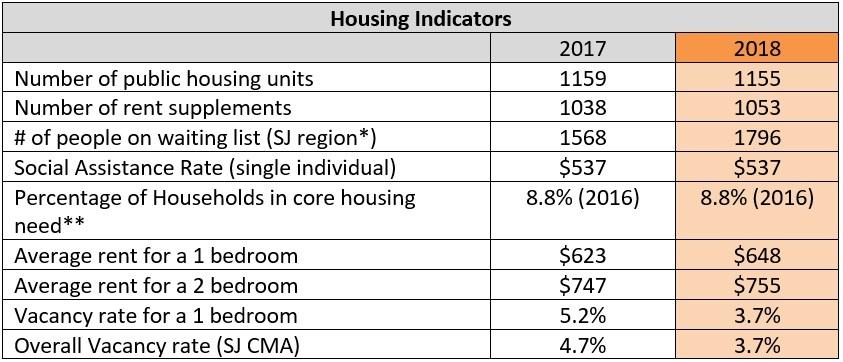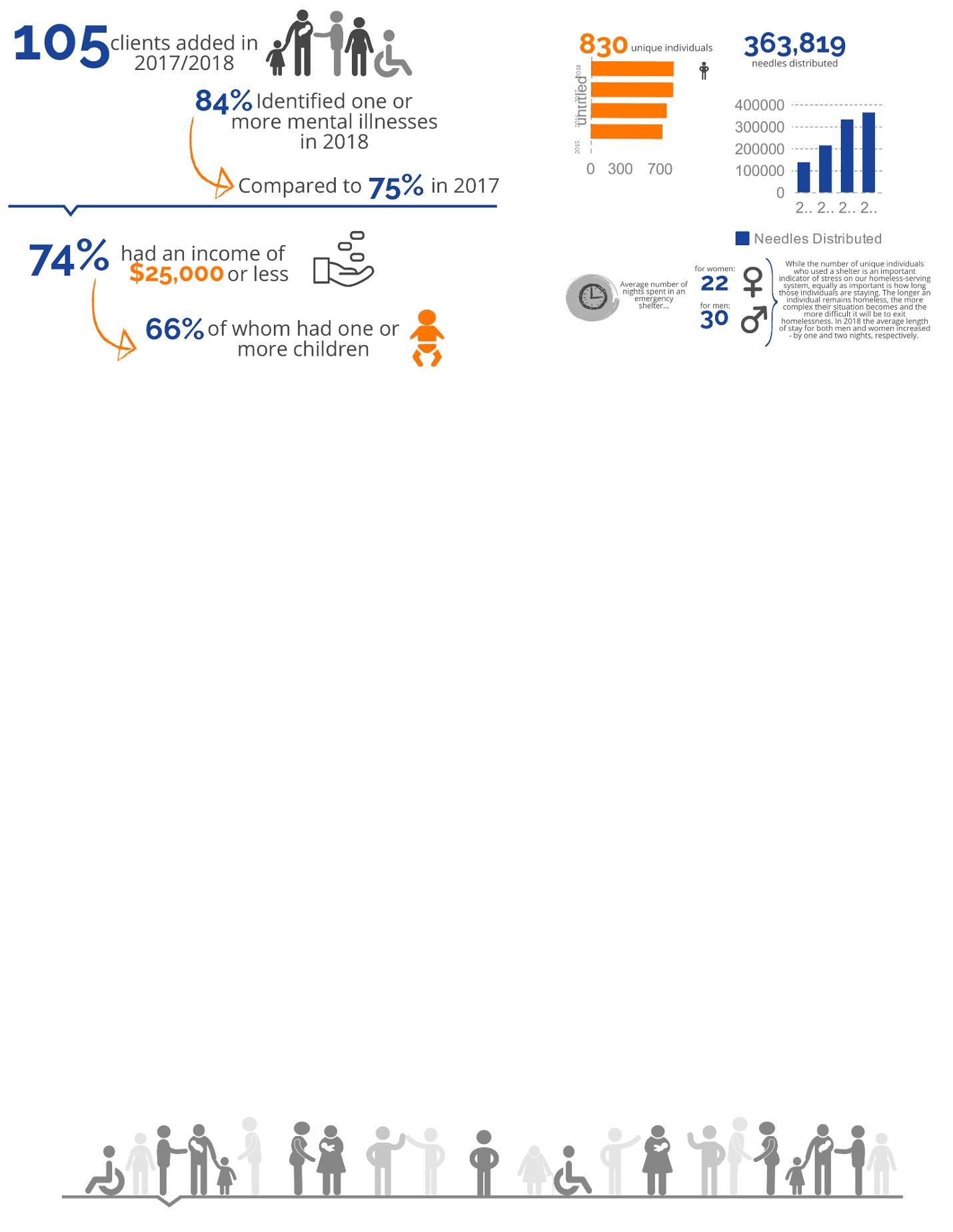Shelter St at ist ics Th er e w as a 17 per cen t in cr ease in t h e n u m ber of in dividu als w h o u sed an em er gen cy sh elt er in 2018. A total of 417 unique individuals were recorded in 2018, compared to 356 in 2017. This increase is in line with a developing and concerning trend over the past several years, highlighted in the graph below. The surge in shelter use was evident in both our men's and women's shelters, with each tracking their highest numbers ever. Coverdale, Saint John's women's emergency shelter, admitted a total of 107 women - a 15 percent increase over 2017. Outflow, the men's shelter, saw an 18 percent increase over last year, with 310 men. A breakdown of the individual shelters' statistics is found on the following page. Not surprisingly, the increase in individuals corresponded to a spike in occupancy rates as well. Representing the ratio of beds occupied over the year versus the total number of beds in the shelters, this number essentially tells us how full the shelters were over the course of the year. In 2018, the shelters had a combined occupancy rate of 107 percent - a 21 percent increase over 2017. This clearly demonstrates the considerable stress that shelters are experiencing. A greater than 100 percent occupancy rate also means the inevitability of turn-aways. However, occupancy rate, while a valuable indicator, does not tell the whole story. Anecdotally, shelters have also experienced a dramatic increase in complex needs among their clients, particularly mental health and substance use issues. As these issues increase, the burden on shelters, which are typically not equipped with mental health professionals or addictions specialists, only becomes exacerbated. This context is not evident in the shelter data presented here. However, more on addictions and mental health will be covered later in the report.
2018 Saint John Homelessness Progress Report

Issuu converts static files into: digital portfolios, online yearbooks, online catalogs, digital photo albums and more. Sign up and create your flipbook.



